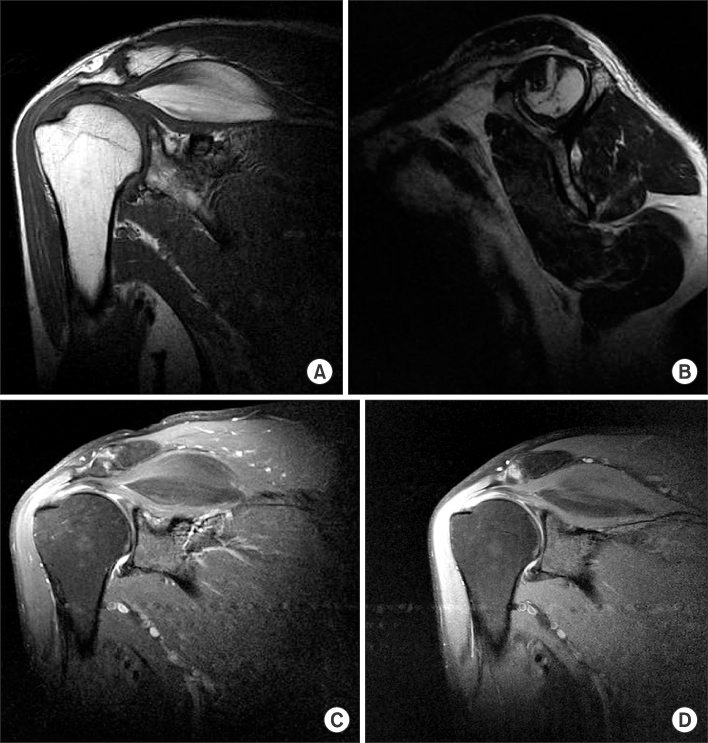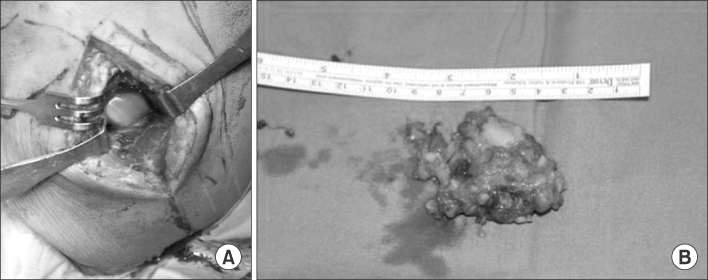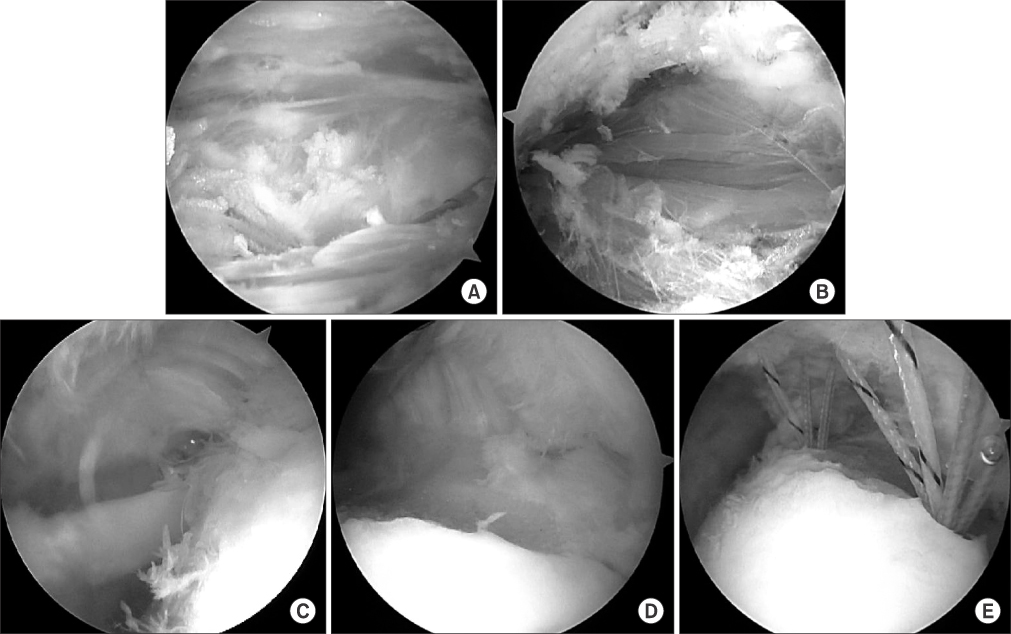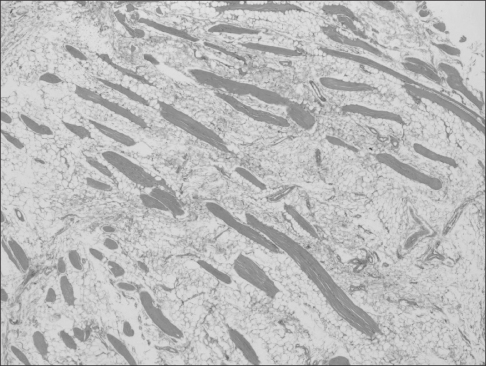J Korean Orthop Assoc.
2015 Feb;50(1):49-54. 10.4055/jkoa.2015.50.1.49.
Intramuscular Lipoma of the Supraspinatus Muscle with Supraspinatus Tendon Partial Tear
- Affiliations
-
- 1Department of Orthopedic Surgery, Daegu Fatima Hospital, Daegu, Korea. nso1020@naver.com
- KMID: 2106738
- DOI: http://doi.org/10.4055/jkoa.2015.50.1.49
Abstract
- Infiltrating lipoma in supraspinatus muscle on the shoulder is very rare. We performed open excision and rotator cuff repair on a patient who had infiltrating lipoma in supraspinatus muscle with partial tear of the supraspinatus tendon. We achieved a satisfactory outcome on one-year follow-up magnetic resonance imaging. We report on the case with a review of the literature.
Keyword
MeSH Terms
Figure
Reference
-
1. Neer CS 2nd. Impingement lesions. Clin Orthop Relat Res. 1983; 173:70–77.
Article2. Relwani J, Ogufere W, Orakwe S. Subacromial lipoma causing impingement syndrome of the shoulder: a case report. J Shoulder Elbow Surg. 2003; 12:202–203.
Article3. Egea Martínez JM, Mena JF. Lipoma of the supraspinatus muscle causing impingement syndrome: a case report. J Shoulder Elbow Surg. 2009; 18:e3–e5.
Article4. Ferrari L, Haynes P, Mack J, DiFelice GS. Intramuscular lipoma of the supraspinatus causing impingement syndrome. Orthopedics. 2009; 32:pii:orthosupersite.com/view.asp?rID=41927.
Article5. Weiss SW. Lipomatous tumors. Monogr Pathol. 1996; 38:207–239.6. Sungur N, Kilinç H, Ozdemr R, Sensöz O. An infiltrating intramuscular lipoma of the brachioradialis muscle. Ann Plast Surg. 2001; 46:353–354.
Article7. Oh JH, Gong HS, Kim HH. Paralysis of inferior branch of suprascapular nerve by a lipoma: a case report. J Korean Shoulder Elbow Soc. 2004; 7:103–107.
Article8. Matsumoto K, Hukuda S, Ishizawa M, Chano T, Okabe H. MRI findings in intramuscular lipomas. Skeletal Radiol. 1999; 28:145–152.
Article9. Blair B, Rokito AS, Cuomo F, Jarolem K, Zuckerman JD. Efficacy of injections of corticosteroids for subacromial impingement syndrome. J Bone Joint Surg Am. 1996; 78:1685–1689.
Article
- Full Text Links
- Actions
-
Cited
- CITED
-
- Close
- Share
- Similar articles
-
- Diagnosis of Partial Thickness Tear of Supraspinatus Tendon Using Dynamic Ultrasonography Under Resisted Scaption Position
- Partial-Thickness Tear of Supraspinatus and Infraspinatus Tendon Revisited: Based on MR Findings
- Isokinetic Muscle Strength and Muscle Endurance by the Types and Size of Rotator Cuff Tear in Men
- Sonoelastography on Supraspinatus Muscle-Tendon and Long Head of Biceps Tendon in Korean Professional Baseball Pitchers
- Plain Radiographic Findings of a Supraspinatus Tear: Correlation with MR Findings






